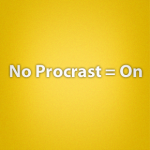Welcome to The Startup Foundry.
Art vs Product: The creativity motivation spectrum
Guest Author
TSFPublished: Jul 12, 2011 11:25 am

Left, Zuerst die Füsse, a work of art. Center, Apple's iPhone 4, a artful product. Right, Monavie, an Acai juice MLM scheme.
Right now I’m in a weird state of my career development. I’m not riding a rocket of momentum as I have in past ventures, but instead am finding myself evaluating opportunities and work with a more measured approach. I’ve got an idea of what I’d like to do for my next startup, specifically dealing with video production, but I don’t think the ecosystem is ready. That means I’m taking some time to be an artist, rather than a producer.
Artist and Producer are two terms I’ve thought of in my head to describe a spectrum of motivation. Artists create because they have to— meaning they have some idea in their soul which they have to get out and show the world. Producers (product people), on the other hand, create something they think the world wants to have right now.
Regardless of true motivation, people can enjoy the end work, but motivations can drive how the work impacts society and culture during the product’s lifetime.
Art and Artists
Let’s look at artists for a second. When I say artists, I’m talking about a specific type of person, or group of people whose motivation for creativity is simple: Because they can. Artists, traditionally, create their vision single-handedly without regard for who will consume the work. They don’t ask for help, they don’t take direction from anyone else, and their only motive is to have the work exist in the real world. That leads to some typical “artist” results: they don’t often take critiques well, they don’t produce something that can be considered a wide “hit”, and yes, they tend to fiscally starve. Artistic integrity means the pure execution of an artistic message free of an external motive. Obviously artists take into account other inspirational works, but the actual artistic work, theoretically, will be free of any external bias or motivation.
Works with artistic integrity can have a big societal impact, but the lion’s share of “true artists” (think Brooklyn-esque modern artists) are relegated to current-day obscurity. The most influential pure artists sometimes can catch a break before death, but often times artists are so ahead of their moment that they can’t be fully appreciated until their ideas are mainstream, decades later.
I used to walk through New York’s Union Square on Sunday to get to my church near 15th and 7th-ish. As I walked through the square, there would often be artists set up, hocking their wares. I’d talk to a lot of pretender artists, who’d be selling kitschy glass-wares or t-shirts, but occasionally I’d meet someone who just wanted to show off their work. For them, a $45 print purchase wasn’t validation as much as a means to continue exploring their artistic style. They could care less if people understood their point of view, they just needed some way to pay the rent.
To put it succinctly: Artists create for themselves and nobody else. Their work is an execution of their internal message, mixed with time, medium, education and place.
Products and Producers
At the other end of the spectrum we have the producer. Producers create works to be consumed. A true product should serve the consumer’s immediate need, and not the producer’s view of the world. A true producer isn’t attached to any idea, and would be willing to change every aspect of the final product to meet the short-term validation of a customer[1].
For me, the starkest personal example of product people comes in the form of TV news. There, the product people use research consultants to come up with conclusions about what people want. Consider the promos for TV news stories during sweeps. Their entire goal (I’ve witnessed it!) is to get you to watch, so they optimize your short-term fears into ratings.
Typically, the folks who run TV News departments don’t actually have a true point of view. Instead, they chase this homogenized version of “All American TV News!” which has permeated the country[2]. In addition, TV News is notorious for using its validation strategy, i.e. ratings, as the only metric for success. That’s why every February, May, and November you’ll see the scare tactic stories hit the airwaves. Their “viewers at any cost” mantra ends up hurting the product’s integrity and societal worth, which is why TV news is seen as a punchline more often than a Murrow-era trusted friend.
The best way I can put it: True product people are essentially whores. Whores who are completely devoid of ethics, and so concerned with the validation (typically in terms of dollars) that they’ll do anything to get it.
Making an impact
Who should you be? I think the smartest people, and the most useful people for society at large, lie somewhere in the middle.
For instance, a person running a startup company should start with an artistic vision for a company which inspires employees, investors and others. They should be able to see what they think the end work looks like from the get go. However, unlike an artist, they should be willing to validate every part of the product, and tear down any part which doesn’t serve their customer’s true needs. They should be building their work for a specific audience and person.
Unlike a true product person (whore), they shouldn’t hand design over to the customer, nor should they assume the customer knows exactly what they want. Instead, they need to show artistic like vision with a clear objective. Usage patterns, research, a/b split testing and the like are scientific ways to inform a vision, not ways of proving a vision. True creativity is what separates the iPhone from every other phone before it.
Startup artists build their product for a group of art aficionados (aka early-adopting TechCrunch readers), whereas startup producers play in the realm of affiliate commission, penny-auction sites and the like.
Two sides of the equation
A quick object lesson using tech industry titans. We’ll pull Apple and Google as our examples.
Apple, and its spiritual leader, probably puts the ratio at about 70 percent artist, 30 percent product. The company seems to launch products with an artistic vision, but isn’t so hard headed that it won’t adapt. You think the Genius Bar is an accident? We’re confident it’s Apple’s way of gathering feedback for product flaws. By iterating yearly, Apple incorporates all that data[3], but when people cry out for features they think they need (FLASH ZOMG!) Apple sticks to its original vision (no browser plugins!) and keeps on trucking.
Google, on the other hand, seems to be Apple’s spiritual opposite (70 percent product, 30 percent artist.) Larry and Sergey are notorious for testing everything, and their company has extrapolated that to a/b testing shades of blue. At the top, however, is a pure artistic motivation: Focus on the user, and the rest will follow.[4]
Own your own trajectory
It’s not a bad thing to be a pure artist, or a pure product person at some point in your career / life, but the key is to realize what you’re doing and the underlying effects. Right now, for instance, I’m focusing more on “personal art projects” instead of creating products. I’m taking my time to learn how to code, and the output is for nobody but myself. I have friends who work in companies that I’d tend to term “product whores.” They’re making lots of short-term money, in the hopes of a more balanced art / product life style in the future.
When I move onto my next stage, I want to have that middle-ground. I want to change society / the world. I think I’m going to do that through an artistic vision of the future of video. I’m not shooting for the moon just yet, but when I do, I’ll be trying to make something people want, artistically.
Tl;dr
- I use Art and Product as keywords at opposing ends of a spectrum to describe a person’s motivation for creativity.
- Artists create art for themselves, Producers create products for other people.
- Artists ignore others, sometimes to their detriment.
- Product people listen to their customer, sometimes to their detriment.
- True product people are whores.
- True artists are starving artists.
- People who make societal and cultural impact now, before they die, tend to be in the middle of the spectrum.
- The creators’ Art / Product orientation determines the future impact of the work. The more art, the more potential for impact. The more product, the more potential for short-term effects.
-
👉 Filed Under.
Categorised in: Culture
Get Connected:
If you like startups, join our weekly mailing list. Good startup content, no fluff.
👇

Hi, I'm Paul Hontz.
I'm a YC alumn and I love startups. I created TSF to highlight companies I find interesting. You can learn more about me here.
Recent Posts:

The Story of Cruise (YC W14): How 4 people built a self driving car in 7 months.
Jul 8, 2014 2:35 pm

I Want To Write About Your Startup – Relaunching TSF
Jan 17, 2014 5:14 pm

How To Do B2B Email Sales
Nov 23, 2011 2:12 pm

Nasty Bug in iOS 5.0.1 OTA Update screws up Address Book on the iPhone 4S
Nov 10, 2011 11:56 pm

It’s Easier to Answer to Your Code Than Your Customers
Oct 28, 2011 2:25 pm


